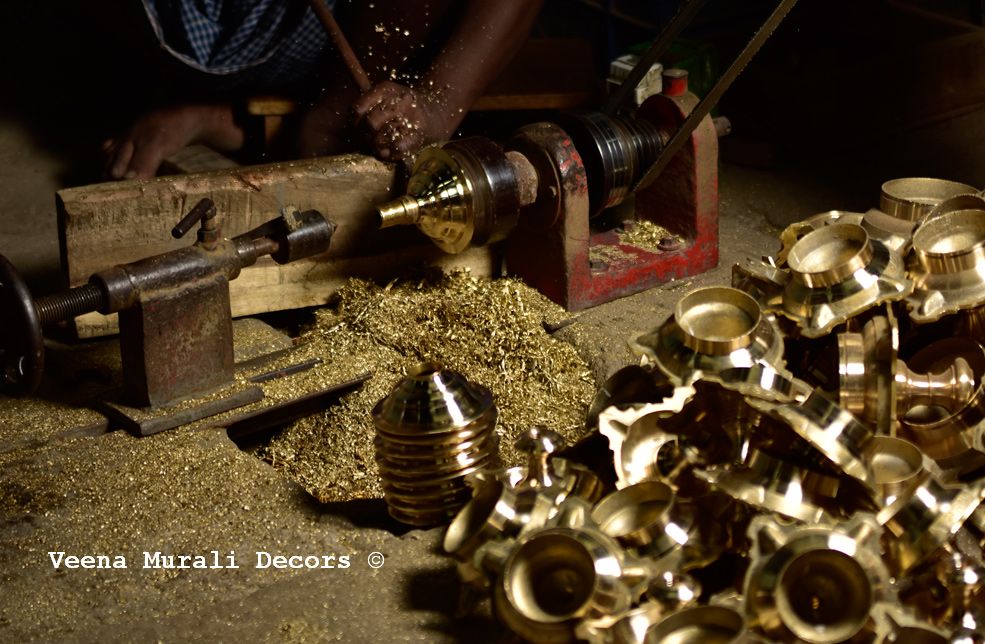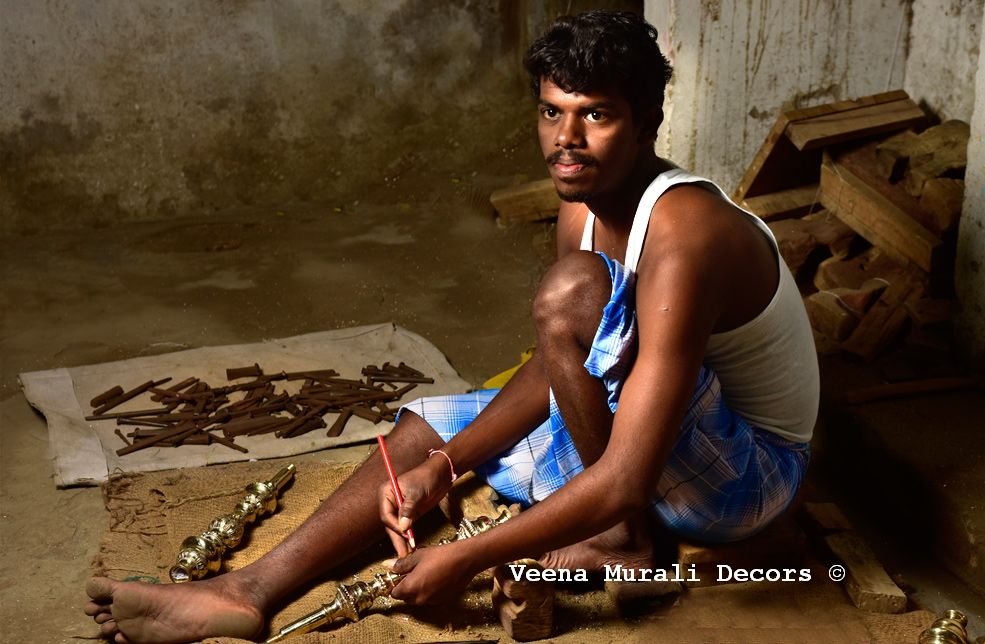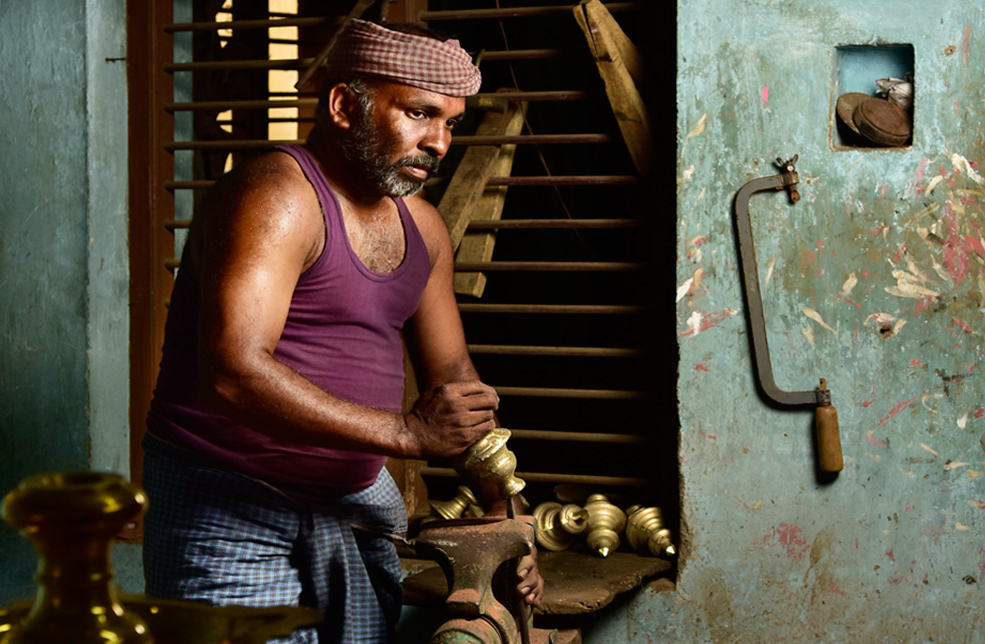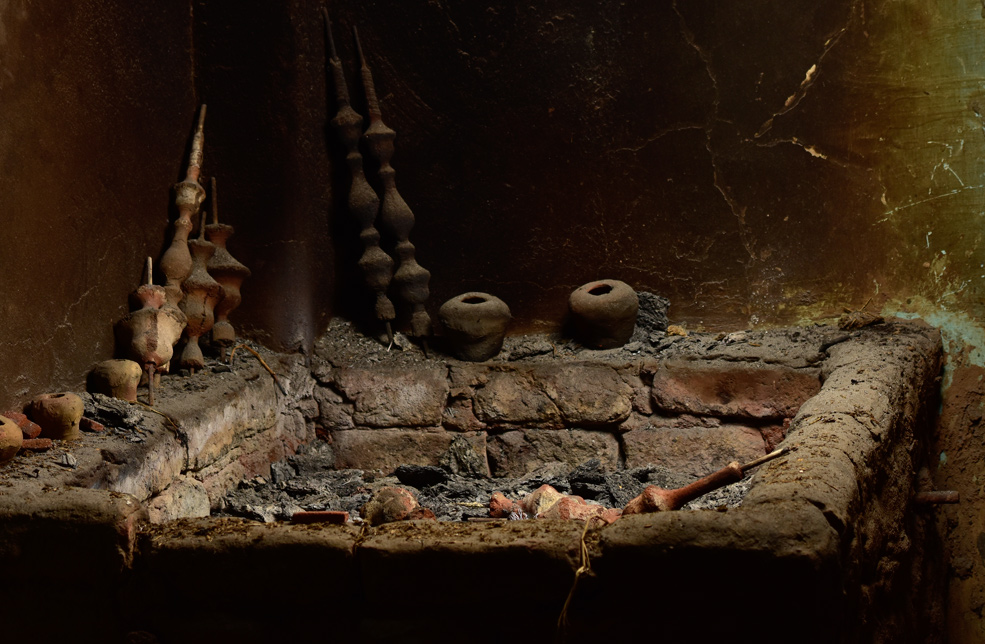Nachiyar Koil Lamp-"Illuminating Tradition and Craftsmanship"

In the vibrant heart of Tamil Nadu lies the village of Nachiyar Koil, renowned for a craft that has illuminated sacred spaces and homes for generations: lamp making. This traditional art form, deeply embedded in South Indian culture, transforms raw materials into exquisitely designed lamps serving both functional and ceremonial purposes. With its Geographical Indication (GI) tag, Nachiyar Koil lamp making is celebrated for its unique artistry and cultural significance.
Andal and Her Connection

Andal, also known as Goddess Andal or Nachiyar, is one of the twelve Alvars and a prominent saint-poetess in Tamil devotional literature. Venerated in the Vaishnavite tradition, she is especially revered for her works Thiruppavai and Nachiarkkiniyar. The title "Nachiyar" translates to "the Queen" or "the Noble Lady," reflecting her divine status as an incarnation of Goddess Lakshmi, consort of Lord Vishnu.
Thiruppavai is a collection of 30 hymns dedicated to Lord Vishnu, composed by Andal. In one of her verses, she describes the devotional act of lighting lamps as a form of worship:
நீங்காத செல்வம் நிறைந்தேலோர் எம்பாவாய் வெங்கடவற்கு வித்துகிட்டும் ஏங்கிக்கிட்டும் உகக்கிடந்தும் நீங்காப் பொருளா நிறைவிற்போர் தங்களது விளக்கினில் தங்கிச் சொரியுமாகச்
"We light bright, shining lamps for Him, who measured the entire universe with His steps, and we offer our prayers."
Although Andal is not directly associated with the Nachiyar Koil temple historically, the temple honors the same divine figures revered in her hymns.
The Origin of Nachiyar Koil Lamp-Making
The lamp-making tradition in Nachiyar Koil began with the Pathers (Kammalar), skilled artisans from Nagercoil (now Kerala). Facing challenges there, five families migrated to Kumbakonam and then to Nachiyar Koil in 1857. In Kumbakonam, Tamilnadu they learned to use brass sheets from local artisans and adapted this technique to their own expertise, using "vandal sand" from the Cauvery riverbed. Settling in Nachiyar Koil, they established their craft, and today, the lamps, known as Nachiyar Koil Lamps, are created by Pathers on Kammalar Street in Nachiyar Koil.

Significance of the Kammalas
The Kammalas, also known as Kannalans, were artisans with a unique role. The term ‘Kannalan’ refers to those who oversee or impart sight, especially during the consecration of temple images. The Kammalas were creators of visually appealing objects, their work adding aesthetic value to their creations. Their roles, duties, and privileges were distinct from other groups. They were involved in significant tasks such as constructing temple towers (gopuras) with intricate carvings, making temple cars and chariots, and crafting jewelry and vases from various metals.

Economic and Social Disparities
In the Chola Empire, craftsmen faced marked economic and social disparities. Rural craftsmen were less privileged compared to their urban counterparts, with varying income and property levels. While some weaving communities made donations to temples, others struggled to sustain their livelihoods. Temple honors and respect were often linked to donations and social status, with Master Craftsmen enjoying considerable privileges and respect.


Worker Safety and Health Risks in Lamp-Making
In the lamp-making industry, safety concerns are significant. Approximately 90% of workers do not use safety equipment such as protective clothing, gloves, shoes, goggles, ear muffs, masks, or fire extinguishers. About 58% are unfamiliar with these safety measures, while 62% find them uncomfortable. Furthermore, 78.4% of workers tend to ignore minor health issues like coughs, eye pain, headaches, and body pain, opting for self-medication instead of seeking professional help. Only 40% visit hospitals for major injuries or diseases, while burns or accidental injuries are often treated with over-the-counter medicines. Major health concerns include musculoskeletal discomfort from physical hazards, respiratory problems due to smoke and dust, and psychological stress from economic and family pressures.
{Images captured here are copyrighted by Veena Murali Decors}
Total Views : 547
Related blogs
.jpg)
Dindigul Lock – Securing the Treasures of Dindigul with a Timeless Lock
The Dindigul lock is more than just a tool; it is a symbol of timeless artistry and masterful ingenuity. Each lock, meticulously handcrafted, embodies the legacy of skilled craftsmen, merging ancient inspiration with unparalleled precision. These locks are not just strong; they are works of art, telling a story of...
Read More.jpg)
Thanjavur Veena: Bringing the Enchanting Sounds to Life
A Little HistoryThe Thanjavur Veena, as its name beautifully reveals, hails from the illustrious Thanjavur region of Tamil Nadu, a land steeped in artistic and musical heritage. From ancient times, this vibrant locale has thrived under the benevolent patronage of the Cholas, Nayakas of Madurai, and the Marathas. It is...
Read More
Sacred Gestures
In Indian art and culture, gestures, or hastas, are not mere hand movements but profound symbols that communicate divine narratives, philosophical concepts, and emotions. Rooted in ancient traditions, these gestures bridge the tangible with the metaphysical, offering insight into the spiritual essence of deities and the cosmic principles they represent....
Read More
The Power Of Postures
Postures are more than just physical positions—they are powerful expressions that convey stories, emotions, and deeper meanings. In art and culture, each posture reflects values, beliefs, and aesthetics, shaping how we understand form and movement. This blog explores the significance of postures, from their ancient roots to their lasting impact...
Read More
A Symphony in Wood
Mysore Rosewood InlayAs dawn paints the Mysore Palace in golden hues, its intricate carvings whisper stories of a regal past. Just as the palace embodies artistic grandeur, Mysore’s rosewood inlay work transforms wood into a canvas of heritage and precision.Inspired by the elegance of the Mysore Dasara procession, this craft...
Read More
Kavadi Aattam
A Sacred Journey of Faith, Music, and Devotion In the heart of the Tamil Hindu community, where faith intertwines with tradition, the Kavadi Aattam ritual emerges as a sacred dance of devotion, steeped in centuries-old myths and spiritual significance. It is a journey not only of the body but of the...
Read More.jpg)
Palm Leaf Manuscripts
India, a land of timeless traditions, has long been a guardian of ancient wisdom, preserving knowledge through the delicate strokes of scribes. Long before paper, stories, scriptures, and celestial insights found their way onto nature’s own pages—palm leaves in the south and Bhurjapatra in the north.In the shadow of the...
Read More